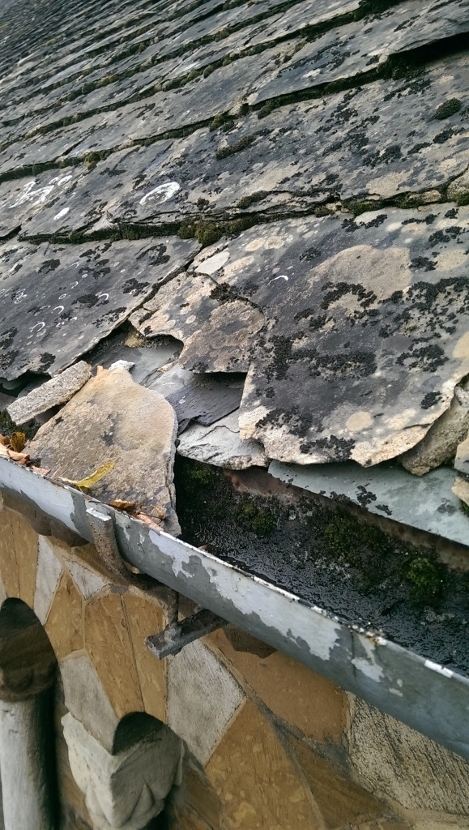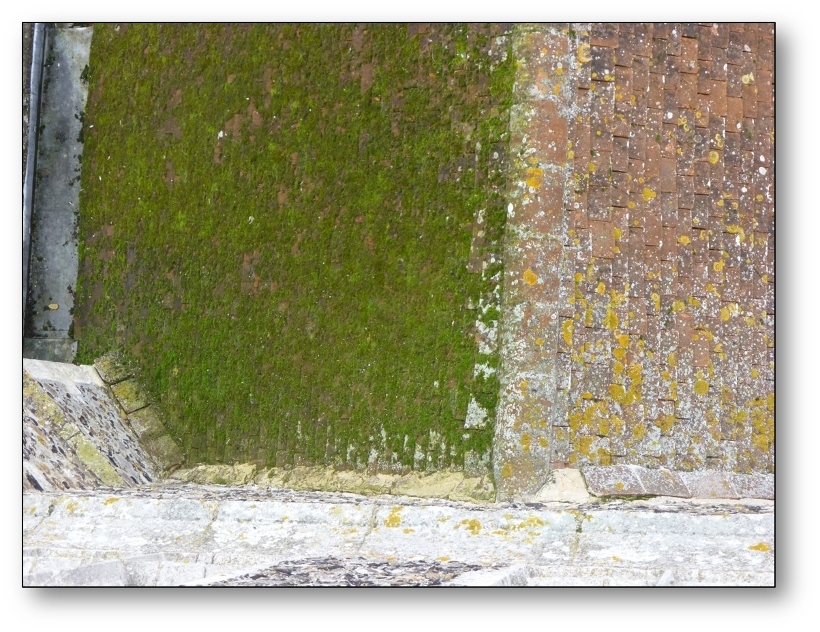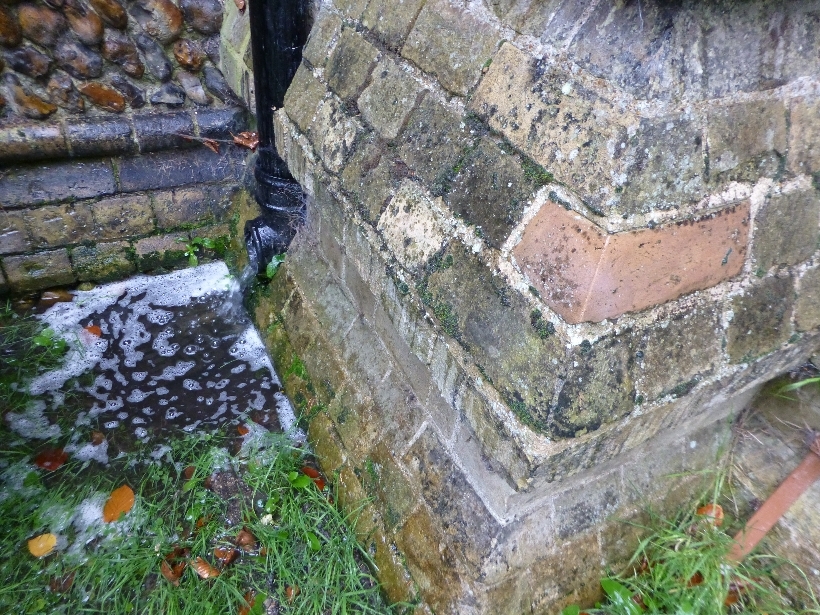Leaky gutters and blocked drains
In 1952 John Betjeman wrote in The Telegraph, “Time damages an old building as effectively as bombs. Gutters have to be kept clear, interiors heated and ventilated, small repairs carried out before they become big repairs”.
We couldn’t agree with Betjeman more. This is why each of our 356 churches benefits from at least biannual maintenance visits.
And what better time to talk about maintenance, than National Maintenance Week?
This annual campaign is organised by SPAB (The Society for the Protection of Ancient Buildings). The roots of National Maintenance Week go back to 1877 , when in the SPAB’s seminal Manifesto, founder William Morris spoke of the need to “stave off decay by daily care, to prop a perilous wall or mend a leaky roof.”
Routine maintenance is by no means glamorous but it is essential in caring for buildings of all ages – particularly old churches.

There's a church somewhere under these leaves...
Buildings are designed to shed water. Roof slopes need to be of sufficient angle for rainwater to run efficiently into the gutters, which lead to hopper-heads and/or down-pipes. These carry water to ground-level into the gulleys and drainage system. Flashings, lead or mortar, protect structural or material junctions, which may be more vulnerable to water penetration.
Features such as deep eaves physically throw water away from the building. Details such as hood-mouldings, string-courses, overhangs/projections, bargeboards, window cills, whilst they can be very attractive, also work to protect a building by expelling water away from the surface and openings.
All of these key features need attention during a routine inspection or maintenance check.

It is essential to maintain roof coverings to prevent water penetration which may lead to damage of the roof timbers and internal finishes. In our maintenance visits, roof slopes are inspected and...
- Parapets, eaves gutters and valleys are cleared;
- Slipped tiles are re-nailed or secured with a copper wire ‘tingle’;
- Broken or missing tiles (including ridge and hip) are replaced;
- Flashings at vulnerable areas such as junctions are maintained;
- Emergency tape repairs are undertaken to metal roofs.

Replaced tile at St Peter's, Offord D'arcy
Gutters, hoppers, downpipes and gullies can become clogged with leaves, moss (from north slopes in particular), debris and silt, leading to water building up and eventually spilling onto or into the building. If left to accumulate for some time, vegetation growth can become an additional issue. The rainwater systems at our churches are cleared regularly to ensure efficient flow.

Mossy north slope at St Mary's, Washbrook
Rainwater goods themselves are inspected for decay – painted decoration protects ironwork from corrosion. Rusted joints and fixings can lead to splits, which spill water onto the building. Insufficient or loose bracketing can lead to problems, as can overloaded systems and poor detailing. uPVC rainwater goods should be inspected for similar defects of detailing, fixing and fracturing.

Blocked drains at Holy Trinity, Halstead
Most of this work is unseen. Yet, it is through planning and caring for our churches in these ways that we continue to invest in our historic buildings to ensure their long-term future.
Help us to maintain our churches Donate now

